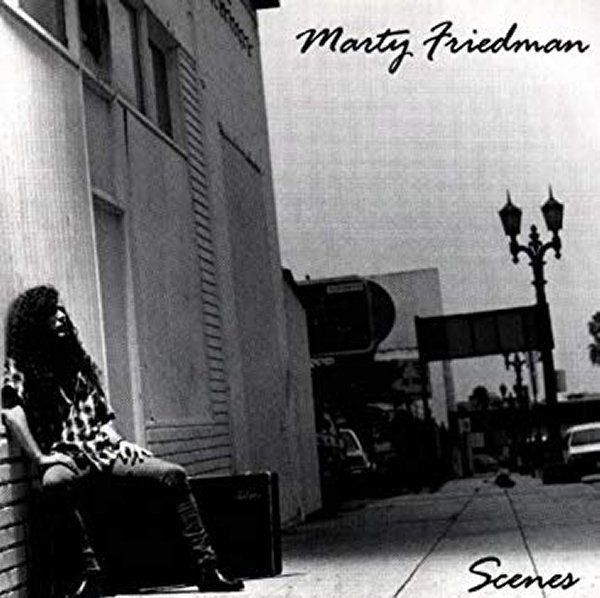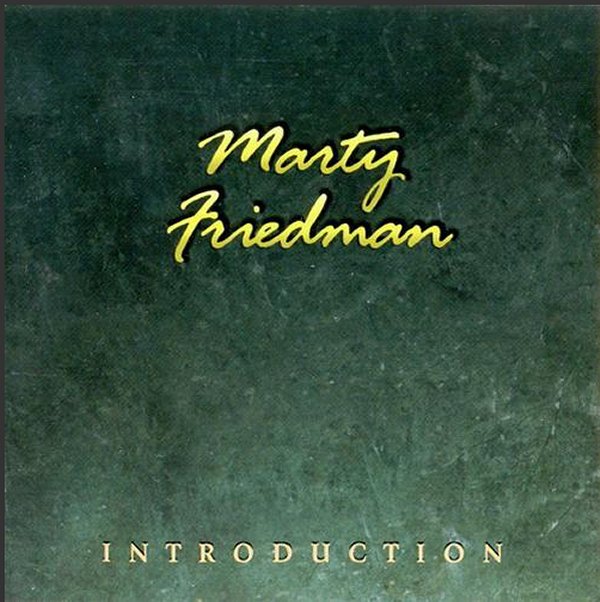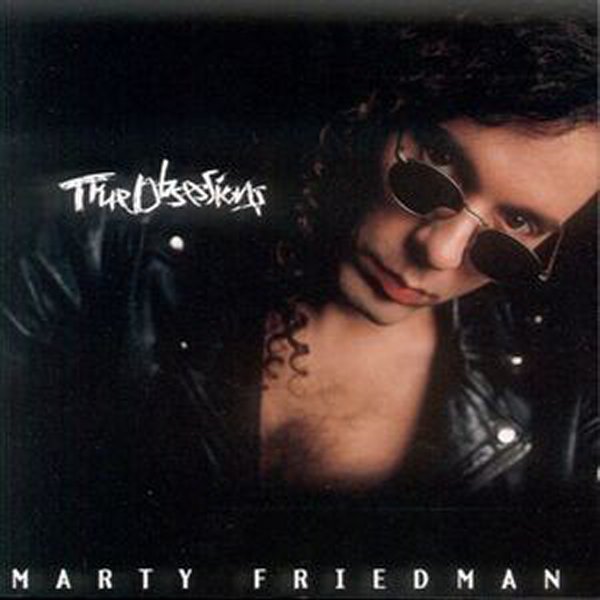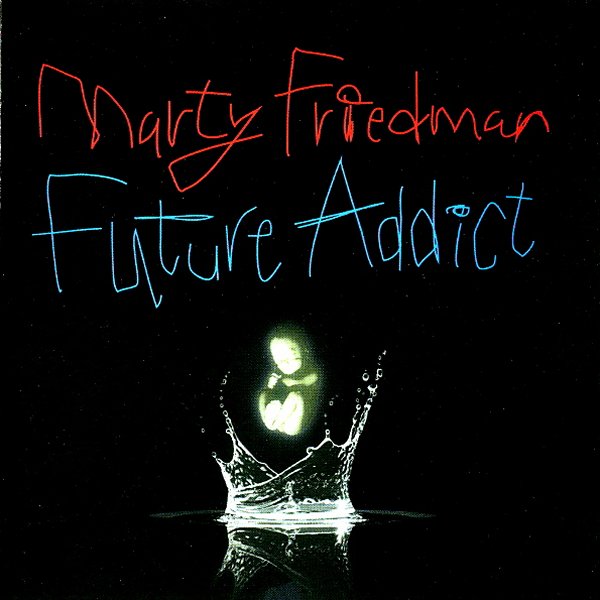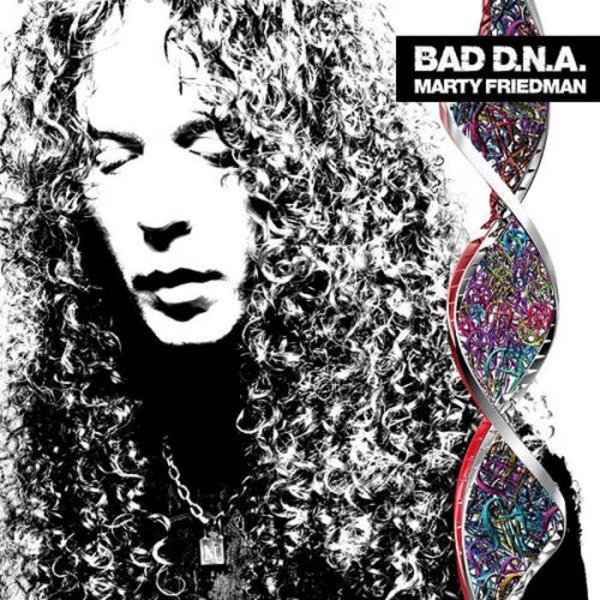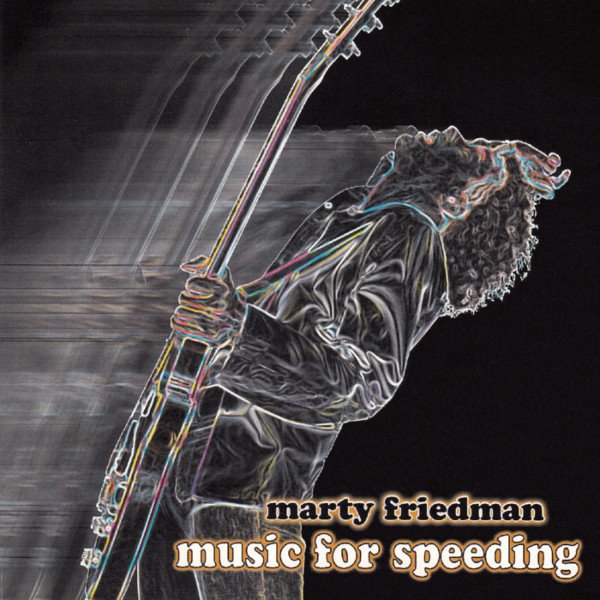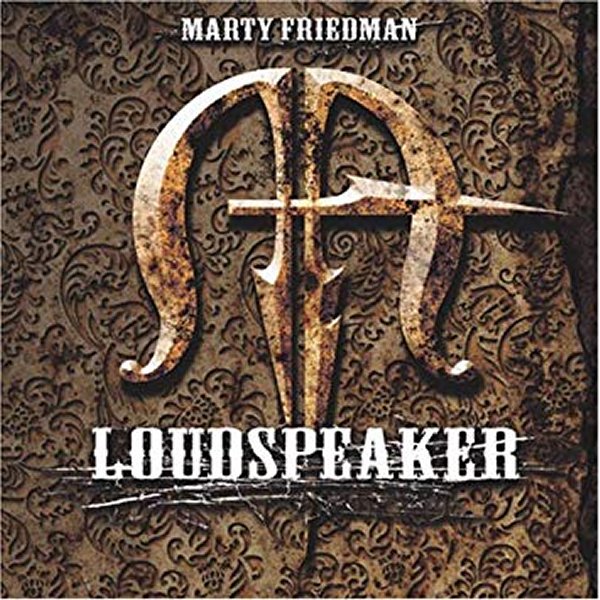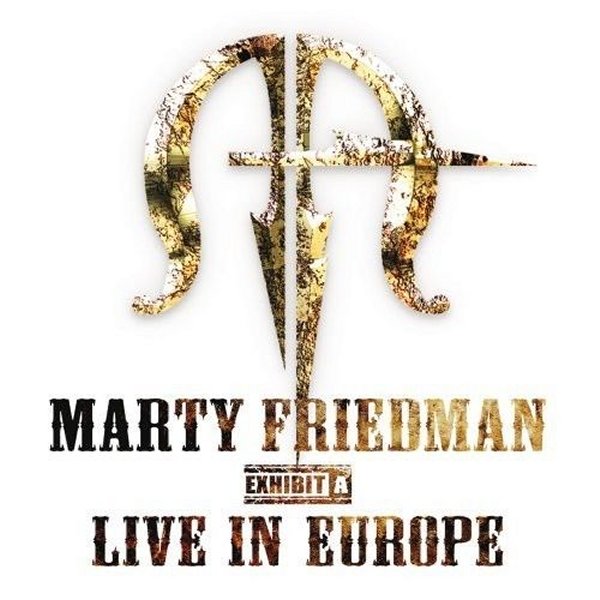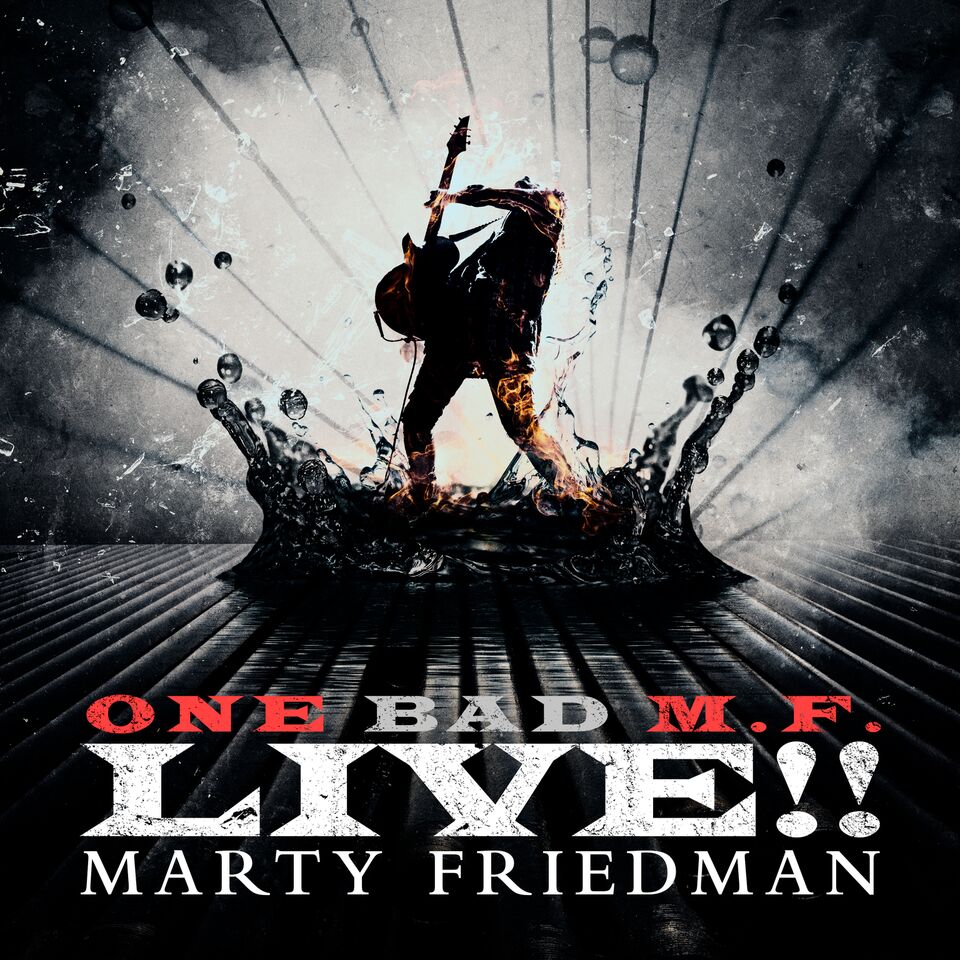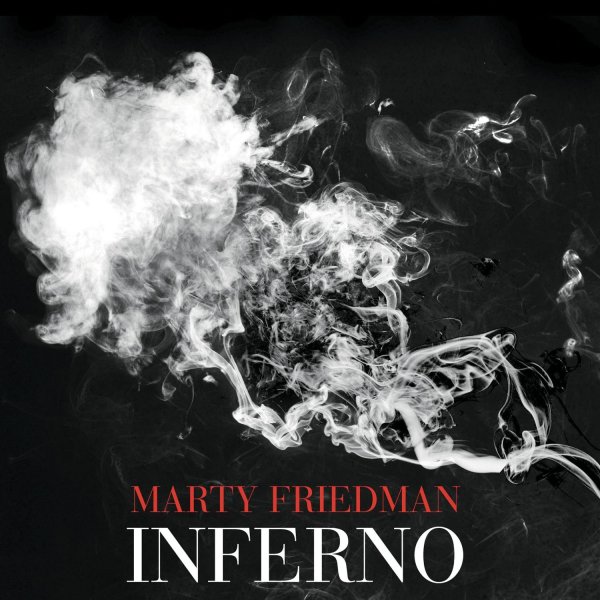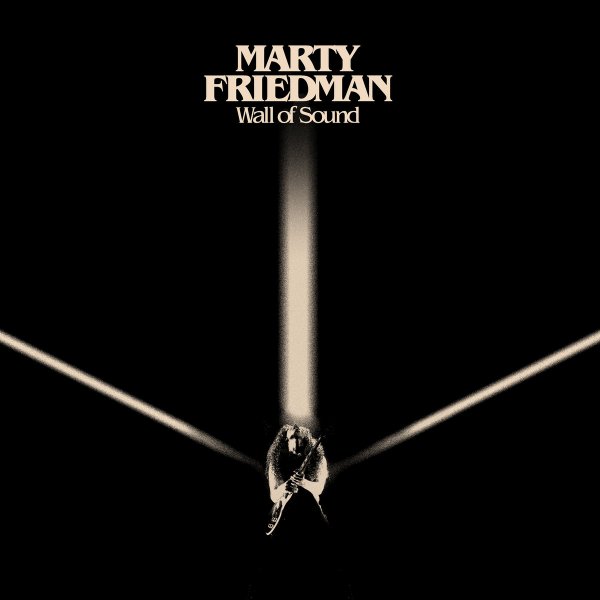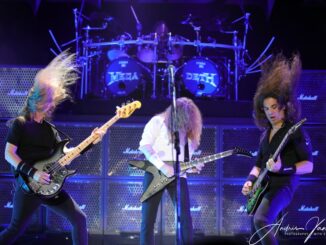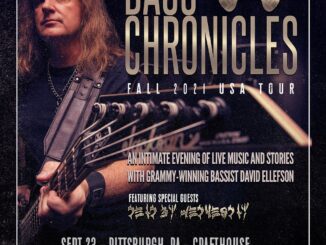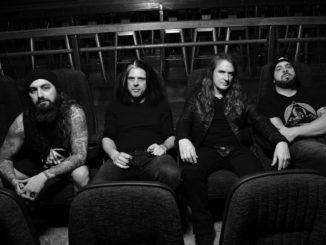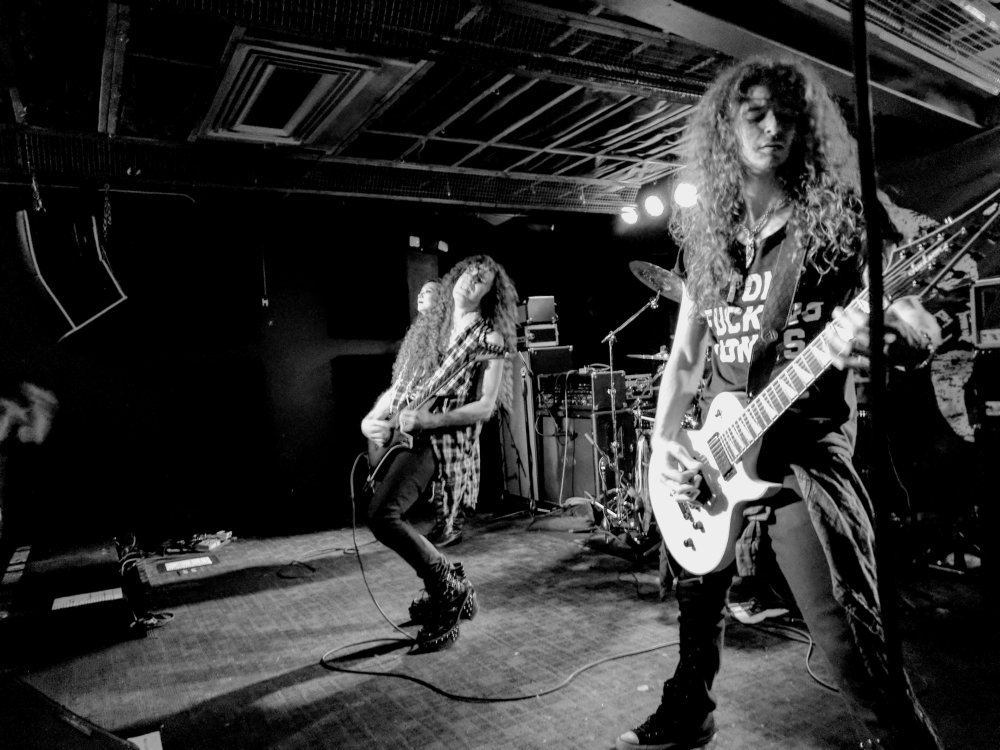
Let’s forget about Megadeth for a while and talk about Marty Friedman’s solo career. He’s been releasing solo albums for over thirty years now–three times his tenure with Mustaine & Company–and while Rust in Peace and Countdown to Extinction remain glowing examples of the guitarist’s talent, if you really want to understand how Friedman today operates in a totally different galaxy from even other highly distinguished virtuoso guitarists, you need to spend some time with the back catalogue of his solo albums..
Given the breadth of Friedman’s solo work–fourteen records, containing a bewildering diversity of styles, influences and experiments—I’ve broken the list into chunks. They aren’t perfectly chronological; rather, each represents a distinct phase in Friedman’s career during which his music accelerated in a particular direction. The constant is motion: Friedman’s drive to create, and to refine his musical ideas and the means for their expression, does not rest.
1. Independence
Dragon’s Kiss (1988)
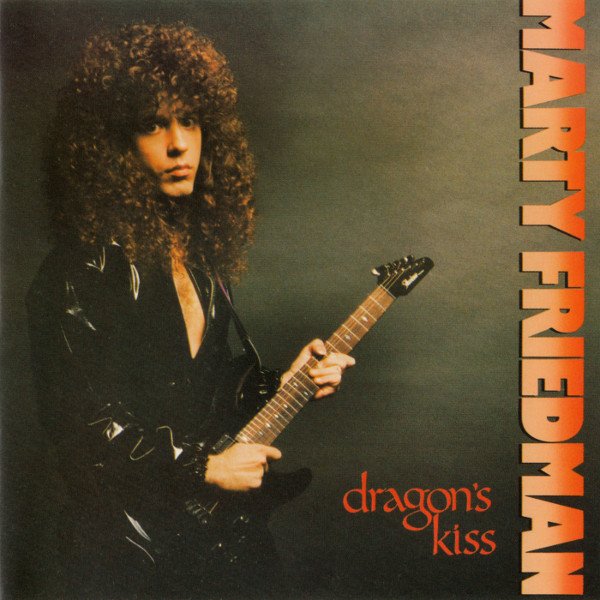
A category unto itself, Dragon’s Kiss wasn’t his first record–his work with Cacophony came before–but it was where 26-year-old Friedman showed the world what he was individually capable of. Stylistically, the influence of his Cacophony co-creator Jason Becker is clear–all those arpeggios and harmonized leads! But the exotic scales, the tasteful melodicism, and the well-modulated pyrotechnics, always refreshingly free of neoclassical excess–these are all pure Friedman. The result, which Friedman has called his “guitar Olympics,” still shines today. It’s tempting to declare this essential Friedman, with everything else to follow just a variation on themes established here, but that’s not correct; if anything, Dragon’s Kiss is an outlier for its relative homogeneity, and the absence of the radical sound experiments that define later works. But for those just discovering Friedman, Dragon’s Kiss is probably the best place to start.
Highlights include “Dragon Mistress,” a masterful two-guitar helix which still appears on Friedman’s concert setlists, and “Forbidden City,” a complex fusion of high-velocity melodies and vigorous thrash that establishes a template to which Friedman will return many times over the coming decades. In “Jewel,” I still get chills at 2:06, when the wailing lead, leaning into an impossible sustain, is finally swallowed up by the swelling distorted chorus.
2. New Age
Scenes (1992)
Introduction (1994)
Appearing during Friedman’s peak Megadeth years, the two “New Age” albums were an antidote to the metal madness, a chill-out room of synthesizers and strings where Friedman could escape the thrash and explore other musical dimensions. The tracks are still guitar-driven—the leads soar as reliably as ever—but often they aren’t so much songs as they are orchestral compositions.
The Eastern influences become more overt: “Realm of the Senses” (on Scenes) involves some spoken-word Japanese effects, and the title may or may not pay homage to a sexually explicit Japanese art film, but it’s not just superficial touches: the whole song is essentially Friedman’s interpretation of a traditional Japanese “enka”-style tune, with some added guitar embellishment. Likewise, on Introduction, “Bittersweet” mates a Japanese flute with high-gain guitar and melancholy strings; “Luna” mimics a Vietnamese melody, and several other songs tilt toward enka-like expressions of sadness and pride. Enka, with its pentatonic scales, vibrato-like flourishes, and amplified sentimentality, remains one of Friedman’s most enduring influences.
I found Dragon’s Kiss impressive, but Scenes, with its outsider ethos, and its emotional peaks and valleys, resonated deeply with my teenage melancholy. Even today, a couple bars from the melody of “Tibet” puts me right back there in my tiny Toyota, speeding on back roads late at night and feeling the brightness of the distant stars above.
3. Swerves
True Obsessions (1996)
Future Addict (2008)
Bad DNA (2010)
You don’t grow without taking some risks, and these three are growth moments, experiments, new directions. They offer some beautiful moments but also some clumsy ones.
Released while Friedman was still with Megadeth, True Obsessions represents a return to mainstream commercially-oriented rock following the New Age era. Friedman has called it his attempt to sell out; it was his first solo record with a major label (EMI). The songs were shorter and simpler, but mostly, critics didn’t love the vocals. Friedman didn’t love the vocals, either. That said, there are some strong moments. “Intoxicated” is a strange, fun song, a shape-shifting attempt at R&B that sticks in your head until you accept its freakish beauty.
Future Addict reworks some cover tunes and pre-Megadeth deep cuts. Critics again disliked the vocals–delivered by drummer Jeremy Colson–and weren’t sure what to do with the “metalcore” vibe. But if you understand the album as Friedman just playing around, as opposed to overhauling his whole playing style, it makes a lot more sense.
Bad DNA, on the other hand, represents a more serious commitment to experimentation, particularly with drum machines and other electronic effects. Fighting back chaos is a major theme, and Friedman’s melodies don’t always defeat the noise. But the guitar work is frequently inspired, and the best tracks–”Random Star” and “Battle Scars,” perhaps–showcase a limbered-up Friedman finding his groove, pushing his boundaries and sweating hard to make weird stuff work for him.
4. Early Hybrids
Music for Speeding (2002)
Loudspeaker (2006)
Though four years apart, and texturally quite distinct, these two albums suggest two different attempts by Friedman to rediscover his musical roots, following the period of significant personal growth during which he left Megadeth, outgrew his New Age period, and emigrated to Japan. Or maybe he’s trying to create new roots, to match his new realities? Either way, the results are interestingly complex, if sometimes uneven, hybrids of East and West, past and present, metal and not-metal. As such they represent a significant evolutionary step in Friedman’s style, opening a space for even more complex remixes a decade or so later.
Music for Speeding, a laboriously self-engineered album that promises uptempo energy without the heaviness of thrash, flaunts its modern beats. And they are indeed catchy. “Catfight” combines Japanese and Korean elements and has a nice hard groove. But emotion may run highest in the album’s ballads, like “Lust for Life,” which was the first song Friedman authored as a Tokyo resident, and, for me, is his most emotionally affecting song until Inferno’s “Undertow”.
Loudspeaker celebrates punk, and wants to be the most aggressive solo album yet, but it wants to be a lot of other things, too. International, for one: besides the increasingly ubiquitous Japanese influences, Friedman folds in Latin American impressions (“Coloreas Mi Vida”) and even some Eastern European moments. And, despite nods to the Ramones and their stripped-down simplicity, Loudspeaker often lunges hard toward prog-rock complexity. “Glycerine Flesh,” probably the most technically fascinating song on the album, starts with a hand-clappy country vibe, but wanders down some dark and intense alleyways before circling back to its poppy climax. Some impressive collaborators (John Petrucci on “Black Orchid” and Steve Vai on “Viper,” among others) have been invited along for the ride, adding to this album’s diversity of guitar textures.
Neither record is perfect–Loudspeaker probably gets closer–but both suggest a significant escalation in the risk-taking that Friedman is willing to take with an album. The future is on the horizon.
5. Full Japan
Tokyo Jukebox (2009)
Tokyo Jukebox 2 (2011)
These two albums, later re-released as a set, are where Friedman goes Full Japan, exuberantly celebrating his Japanese influences with a boldness and affection seen nowhere else. These are cover versions of a wide range of J-pop, enka, Japanese R&B and other songs of Japanese origin, but served up Friedman-style, with aggressive guitar, cranked-up dynamics, and full soaring-solo treatment. For purist fans of the original versions–done by Maximum the Hormone, Perfume, Nakashima Mika, Hirose Kohmi, Aya Matsuura, Aitakatta, Yashiro Aki and others–Friedman’s interpretations may feel a tad blasphemous. But that’s just how he shows his love. The product of a decade of living in Tokyo, these songs demonstrate an intimacy with Japanese culture that most fans outside of Japan can only grasp in the abstract. But they can still appreciate his heavy and melodic guitar work, his deep, searching bends and vocal-quality vibrato. Highlights include “Butterfly,” an elusive beauty that seems simple but is actually highly intricate (an aesthetic Friedman will aspire to in his most recent works) and “Amagi Goe,” a cranked-up version of an enka classic that morphs into an anthem when it appears on the live-show setlist, as it has been recently.
If these albums feel like a pivot point in Friedman’s career, it’s because they are. These may be the first albums in which Friedman, for all of his prior engagement with Japan, hits his late 40s and starts creating music aimed directly at Japanese audiences (as opposed to primarily Western, or ambiguously international, audiences). But that odd sensation, where you’re rocking along to some vigorous rhythm, and then get blindsided by a wistful interlude which gives you goosebumps but then disappears as quickly as it appeared? That’s the sound of future Friedman, today’s mature Friedman, being born.
A thought on the album art. Friedman with half of his face in Kabuki makeup may be the most fitting imagery of any of his album covers. It’s our first glimpse of Friedman the cultural ambassador, they guy who is “as American as f*ck,” as he confesses on One Bad M.F. Live!!, “but sort of Japanese too,” vigorously evangelizing for Japanese music in a way that native Japanese don’t normally do.
6. Live!
Exhibit A: Live in Europe (2007)
One Bad M.F. Live!! (2018)
For the first fifteen years he lived in Japan, Friedman didn’t tour the United States very much. That seems to be changing: since 2015, he’s had three major cross-country tours. I encourage you to catch the current one if you can. Friedman’s live shows reveal a different side of his playing that is necessarily less meticulous (onstage, you can’t redo your solo a dozen times the way you can in the studio) but, more importantly, overflowing with the kind of molten energy that only appears on stage.
You could also check out these live albums, which provide a pretty decent snapshot of the concert experience. Friedman loves the old live albums of the Seventies: Kiss’s Alive! and Frampton Comes Alive!, and Exhibit A and One Bad M.F. Live!! channel the vibe of these classics (right down to the titular exclamation points!). Viewed together, the two Friedman live albums also demonstrate a certain consistency despite the ten year gap between them: a mix of aggressive rave-ups (“Street Demon”; “Stigmata Addiction”; “Elixir”) early-career staples (“Tibet”; “Angel”; Dragon Mistress”) and a select few heartfelt, eyes-closed ballads (“Devil Take Tomorrow”) with clear emphasis on the uptempo stuff. The more ambitious of the two is the more recent album, which features the talented (and mostly Japanese) touring band that has accompanied him on his past three U.S. tours, and includes some technically challenging material off Inferno and Wall of Sound.
7. Marty Friedman Unbound
Inferno (2014)
Wall of Sound (2017)
The most recent studio albums reflect a subtler but more comprehensive integration of his Japanese influences than any of his earlier works. Japanese-ness no longer just means exotic scales and raved-up versions of enka tunes: it’s actually reflected in more complicated song structures, compositions that end in different places than they started, Japanese-style call-and-response motifs, and a high comfort level with dramatic contrasts. And they achieve this without sacrificing any of Friedman’s metal edge. Inferno tests the limits of how aggressive-sounding a Friedman album can be (“Inferno”; “I Can’t Relax”; “Hyper Doom”), and picks up the prog-metal where Loudspeaker left off (“Steroidhead”). It also reaffirms a commitment to melancholy melodicism that makes your heart hurt (“Undertow”).
And if Inferno is a hard-hitting virtuoso performance, it’s neither as ambitious nor as subtly audacious as Wall of Sound, in which Friedman refines the art of dynamic contrast—just like in high-end Japanese cuisine, you want a variety of textures in the same bite—and blends in some highly exotic ingredients (hardcore woodwinds, anyone?) while making the whole thing seem somehow simpler, smoother, more unified—more mature?–than previous works. The hybridization we saw in Loudspeaker is the new normal. Wall of Sound has some aggressive moments (“Self Pollution,” for one), but they are presented in concentrated form, and balanced against Friedman’s haunting melodicism, which swoops through the album as if on jet fuel. (See, for example, the interludes in “Self Pollution” and “Whiteworm”). There’s a lot of collaboration going on, perhaps more than in any other album (see “Sorrow and Madness”; “Pussy Ghost” and “Something to Fight”) but these collaborations amplify, rather than distort, the album’s emotional impact. The soloing, particularly on the second half of the album, is inspired, powerful stuff, some of the best of Friedman’s career. (See “For a Friend,” his Jason Becker tribute, and “Last Lament”). It’s a modern masterpiece, the work of an artist in touch with his emotions and fully in control of his craft.
Brendan Driscoll’s work has appeared in Booklist, The Millions, and other periodicals. His current projects include a study of creativity and commerce among instrumental rock guitarists, and a novel about parenting, male friendship, and immigration status. Originally from the hard-rock heartland of western New York State, he now lives in Colorado.

